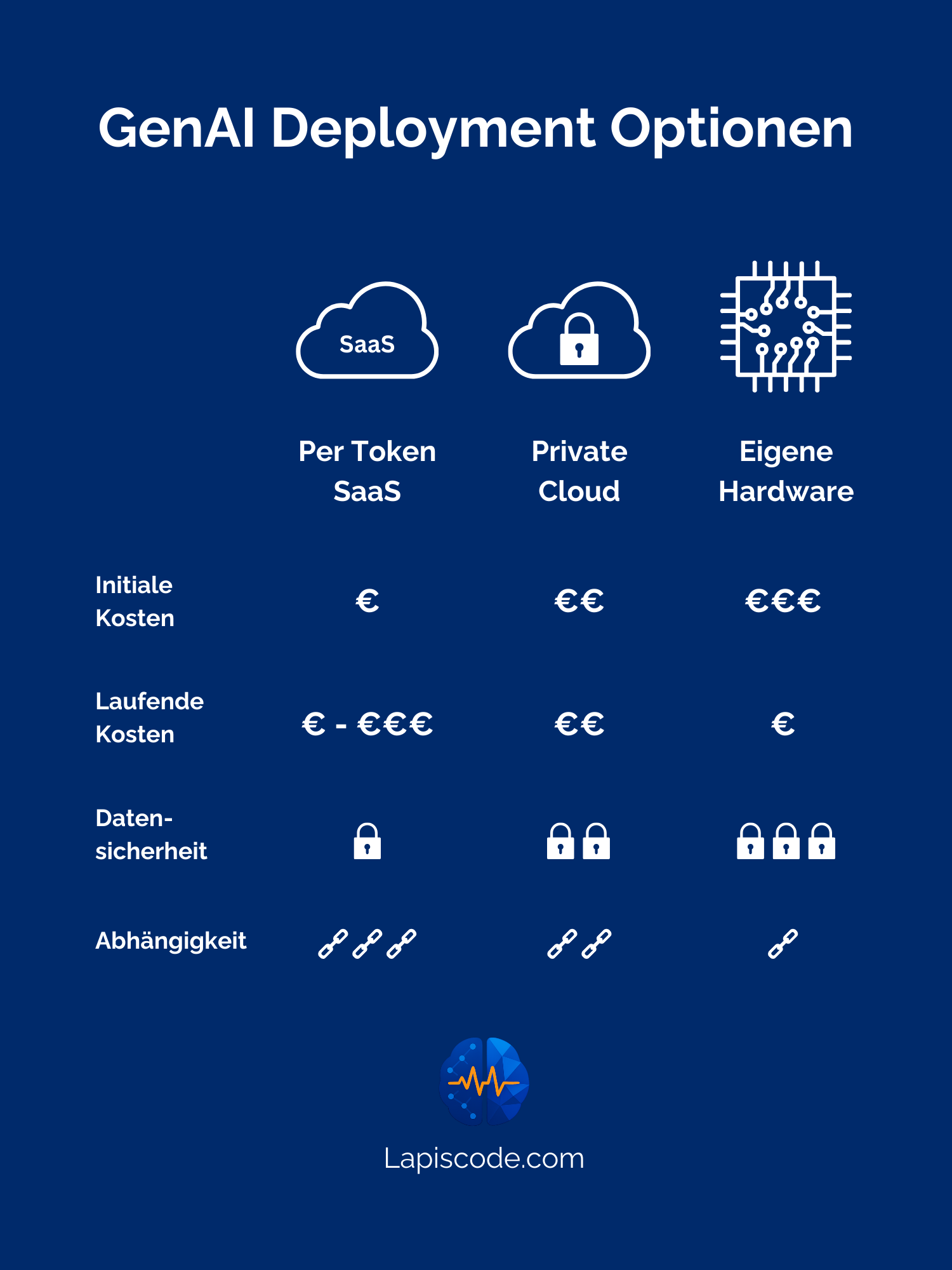Artificial intelligence: opportunities for healthcare
More than just deskwork: opportunities and obstacles for generative AI in healthcare
Generative artificial intelligence (GenAI) has enormous potential in healthcare, ranging from automating time-consuming deskwork to supporting diagnoses. It is not just for the big players; there are also cost-effective ways for smaller companies and institutions to utilize GenAI.
The impressive advancements of generative artificial intelligence (AI) were notably demonstrated in 2024 in a study conducted by the JAMA Network. The study compared the diagnostic abilities of doctors with those of ChatGPT, among others. Both groups were provided with the same typical diagnostic tools. AI ultimately emerged on top, achieving a 90-percent accuracy rate compared to the doctors' 74 percent.1) This case is not the only instance where generative AI has demonstrated its medical capabilities. In 2023, a boy in the United States visited 17 doctors for his chronic pain, none of whom could help him. He then consulted ChatGPT, and the AI successfully identified the cause. 2)
 Klaus Kestel is managing director of the IT company Lapiscode UG, which specialises in developing and implementing AI solutions in areas including the healthcare sector. © Klaus Kestel/Lapiscode UG
Klaus Kestel is managing director of the IT company Lapiscode UG, which specialises in developing and implementing AI solutions in areas including the healthcare sector. © Klaus Kestel/Lapiscode UGIt’s no wonder therefore that the use of generative AI is being tested more frequently in the healthcare sector. The potential is enormous, ranging from handling tedious deskwork to assisting with diagnoses. "I definitely think these models are sufficiently intelligent for a number of applications in the healthcare sector,” says Klaus Kestel from the consulting firm Lapiscode, which is headquartered in the Bavarian city of Fürth. Together with his team, he supports companies, clinics and other healthcare institutions in understanding and applying generative AI (GenAI) in practice. According to Kestel, the widespread use of GenAI is already a realistic possibility, and not just for the big players: "There are definitely ways to benefit from generative AI in healthcare, even with a limited budget," Kestel emphasizes. "However, I would strongly advise against using ChatGPT."
How generative AI could transform healthcare
Generative AI, or GenAI for short, is a form of artificial intelligence that independently generates new content such as text, images or music. Among the best-known applications currently available are OpenAI’s ChatGPT and Google’s Gemini. "The results of generative AI are based on statistical probabilities and therefore have a variable structure," explains Kestel. In concrete terms, this means that the AI predicts which word in a text is statistically most likely to follow. While GenAI is not 'intelligent' in the true sense of the word, it often delivers surprisingly accurate and helpful results, such as quickly summarizing what medical textbooks say about certain symptoms."
This opens up a whole range of possible applications in the healthcare sector. For example, generative AI could compile and summarize relevant specialist literature on specific diseases within seconds to help doctors make diagnoses. In drug development, GenAI could ensure that only molecular structures with a high likelihood of success are tested. Additionally, generative AI is suitable for patient communication: it could explain diagnoses, therapies or medications in an understandable and straightforward manner.
However, Kestel sees the simplest, yet possibly most effective, use in another area: "I believe that reducing deskwork is extremely beneficial, especially for overworked staff in hospitals. This includes tasks such as searching for and entering data, as well as transcribing texts – mindless, time-consuming deskwork that AI can complete in seconds." On this basis, Kestel considers the use of generative AI in healthcare to be highly realistic and feasible in the near future, particularly in back office and compliance processes. It requires no complex systems, and data protection issues can also be effectively resolved.
Costs and data protection as hurdles for GenAI in medicine
 Deployment options: how GenAI can be integrated into a company. © Klaus Kestel/Lapiscode UG
Deployment options: how GenAI can be integrated into a company. © Klaus Kestel/Lapiscode UGThere are enormous opportunities for the use of generative AI in the medical field, but also considerable hurdles. Data protection is high on the list of concerns. "When you use third-party services, such as American hyperscalers like ChatGPT, you are potentially handing over sensitive patient data. I don't think that's a particularly good idea," says Kestel. "The hardware costs for operating a single state-of-the-art language model can quickly reach 100,000 euros due to expensive graphics cards." Although there are EU funding programmes for this, Kestel says that many companies are reluctant to invest in costly hardware from the outset. He cites rental servers and certified SaaS providers within the EU as viable alternatives. Another option is mixture-of-experts models: "These models are divided into several smaller areas, not all of which need to be loaded into the graphics memory at the same time. This significantly reduces costs," Kestel explains.
Staff must rethink their approach and learn new things
However, in addition to the technical and financial challenges, the most important factor in the use of GenAI remains the human element. The healthcare sector is traditionally viewed as conservative and sceptical about digital technologies. This is evident for anyone who still has to send faxes to doctors' practices in 2025. According to Kestel, the situation is no different when it comes to generative AI.
In the introductory workshops to generative AI that he runs with his team, both practice management and doctors are often initially open to the new technology. However, despite this interest, there are frequent misunderstandings and false expectations, including exaggerated aspirations and excessive scepticism. "Sometimes, people have completely the wrong idea about what type of AI can do what," says Kestel. In some cases, institutions require much less technical performance than originally assumed, or simply a different AI technology, such as for basic probability calculations. "At times, I feel as if someone is trying to remove a car tyre and convert it into a circular saw by attaching a saw blade, in the mistaken belief that it can be used for a totally different purpose. Just because systems don't perform as people want them to at first doesn't mean they are useless," emphasizes Kestel. "You can't just go with your gut feeling; you have to test and adjust everything.” Additionally, there is often a lack of basic technical understanding. "In the medical field in particular, it is essential for users to be able to accurately assess the extent to which they can rely on AI, why it outputs certain values, how these should be interpreted, and when a human must make their own decision."
This is because misinterpretations of cause-and-effect relationships, hallucinations or preconceptions based on training literature are always issues with generative AI. For Kestel, one thing is certain: despite all the technological advances and enormous potential in medicine, applying generative AI successfully relies primarily on human competence. "Generative AI can make work in the healthcare sector much easier, but you also have to know how to use it." This means that experienced management personnel, as well as medical professionals, will need to engage with AI training in the future, whether they like it or not. What may seem tedious in the short term could prove extremely worthwhile in the long run.